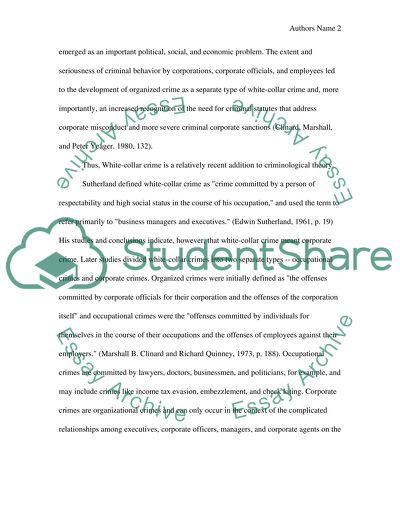Cite this document
(White Collar and Corporate Crime Essay Example | Topics and Well Written Essays - 2500 words, n.d.)
White Collar and Corporate Crime Essay Example | Topics and Well Written Essays - 2500 words. Retrieved from https://studentshare.org/law/1517104-white-collar-and-corporate-crime
White Collar and Corporate Crime Essay Example | Topics and Well Written Essays - 2500 words. Retrieved from https://studentshare.org/law/1517104-white-collar-and-corporate-crime
(White Collar and Corporate Crime Essay Example | Topics and Well Written Essays - 2500 Words)
White Collar and Corporate Crime Essay Example | Topics and Well Written Essays - 2500 Words. https://studentshare.org/law/1517104-white-collar-and-corporate-crime.
White Collar and Corporate Crime Essay Example | Topics and Well Written Essays - 2500 Words. https://studentshare.org/law/1517104-white-collar-and-corporate-crime.
“White Collar and Corporate Crime Essay Example | Topics and Well Written Essays - 2500 Words”, n.d. https://studentshare.org/law/1517104-white-collar-and-corporate-crime.


